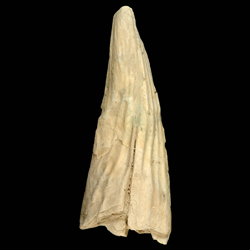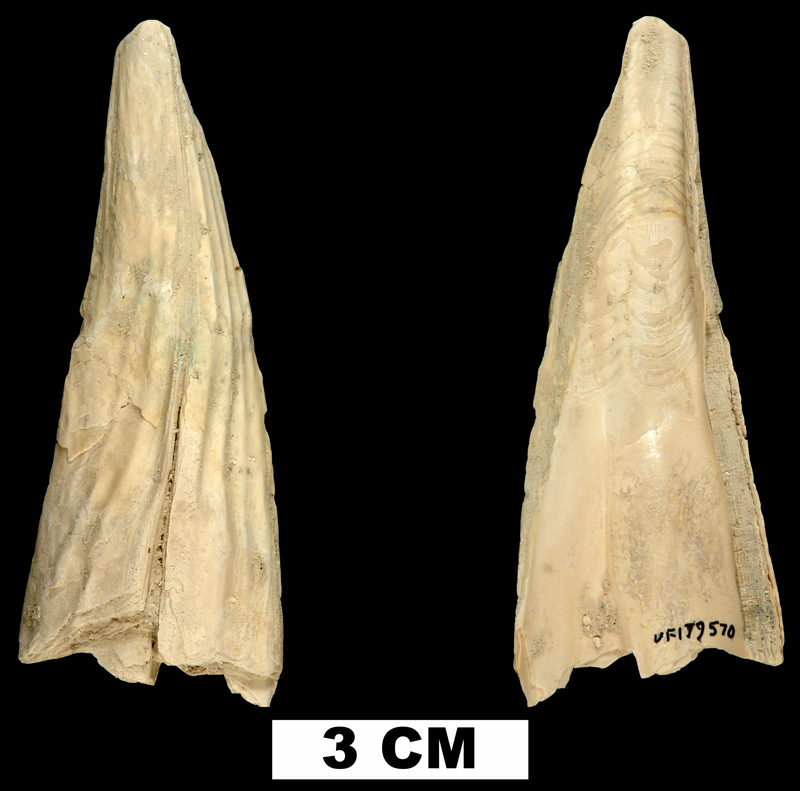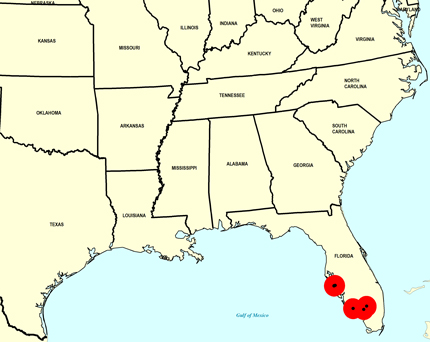
Pinna caloosaensis

Geological Range
Late Pliocene to Early Pleistocene; Extinct.
Paleogeographic Distribution
Southern Florida.
Remarks
Original Description (from Dall, 1898, p. 660):
"Shell long, slender, straight, narrow, thick, with the valves moderately rounded; carina not conspicuous in the fossils, but the sulcus very long, deep, and sharp, represented on the interior by a large rounded rib; dorsal area sculptured with about three feeble irregularly longitudinal ridges; ventral area with about the same number, but stronger and sharper. Lon. of type 120, max. dorso ventral height 40, min. do. 10, convexity of the valve at the sulcus behind 12 mm.
A single broken valve without the fibrous layer and the apical part of another was obtained from the Pliocene marl of the Caloosahatchie.
This species is not unlike P. rudis in form, but is proportionally much thicker and the sulcus is much larger than in the recent shell, which has no such strong, rounded internal rib."
To access this description in its original formatting through Google books, click here.
Stratigraphic Occurrences
- Early Pleistocene
- Caloosahatchee Formation (S. FL)
- Late Pliocene
- Tamiami Formation (Pinecrest Beds) (S. FL)



